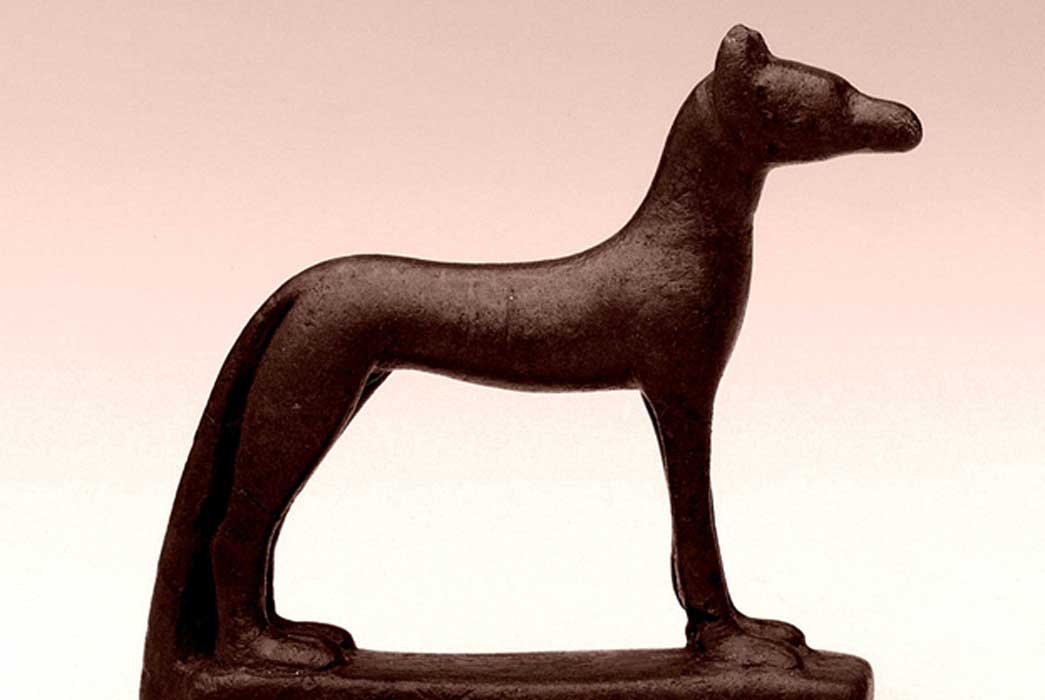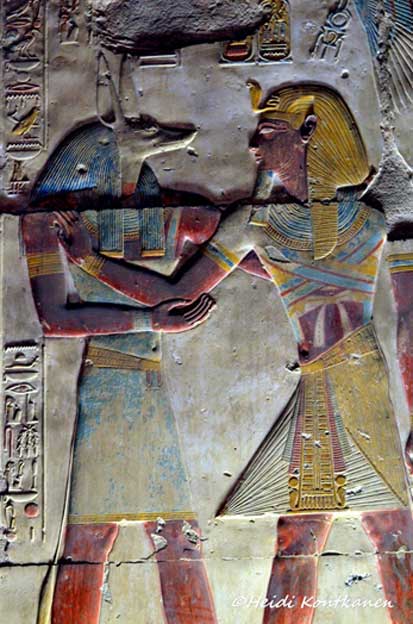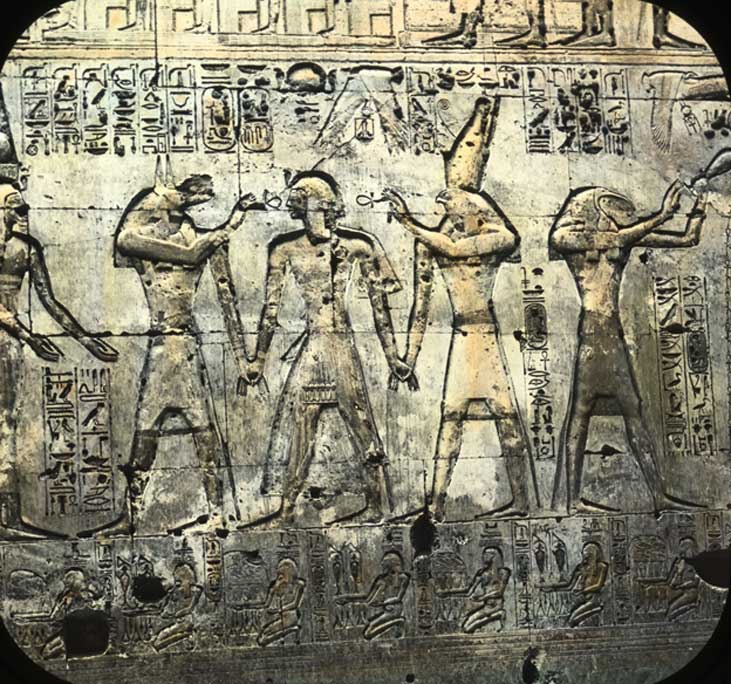
Wepwawet, Lord of Abydos and Champion of Royalty: Jubilees, Worship and Resurrection—Part II
From being a god with militaristic overtones, in time, Wepwawet was hailed as the ‘Lord of the Necropolis’, a role he acquired from Osiris, at his cult centers in Abydos and later Asyut too. A complex deity, Wepwawet catered to different needs – such as protection of the pharaoh, a participant in the ‘Opening of the Mouth’ ceremony; as the ‘Opener of the Ways’ in the Duat (Netherworld); ‘Opener of the Womb’ as the first-born and so on. Along with Anubis, his father (or sibling), the deity ensured the all-round wellness of king and commoner alike – both here on earth and in the Afterlife.

This relief shows Wepwawet embracing Seti I as the King journeys to the Next World; the vulture goddess Nekhbet hovers above protectively (top right). The scene is found on the western wall of the Second Hypostyle Hall; between the chapels of Isis and Osiris. Mortuary Temple of Seti I, Abydos.
Discerning the Necropolis God
On May 30, 1926 renowned British Egyptologist, Howard Carter, who created history by discovering the treasure-filled tomb of the boy king Tutankhamun, made a curious entry in his diary. He noted the sighting of a couple of strange-looking animals. Carter wasn’t sure if one of them was a jackal or a wolf: “In the hills behind my house at Elwat e’diban, Western Thebes, I saw a pair of jackals about 6pm making their way towards the cultivated land. They probably had cubs in the hills as otherwise it was early for them to descend to inhabited and cultivated quarters. But the great interest was, while one of them was of normal size and coloring, the other - I was unable to tell whether dog or bitch, as they did not approach nearer than 250 yards (228 meters) - was totally black, much taller and attenuated, resembling, though tail not quite so bushy, the type ‘inpw’ as found upon the monuments. This is the first example of that coloring and of that kind of jackal I have seen in Egypt for over 35 years’ experience in the desert, and it suggested to me, unless the black jackal is known, a spot of the old and original Egyptian jackal only now known to us as Anubis.’

Ramesses III worships Wepwawet in this relief from his mortuary temple at Medinet Habu. (Photo: Steve F-E-Cameron) (CC BY-SA 3.0)
This observation is crucial, in that it throws light on the existence of species we are as yet unaware of or haven’t fully studied. It also reinforces the beliefs of scholars such as Linda Evans who posit that Wepwawet, who is often confused with Anubis, is: “… perhaps best viewed as a generic or composite canid.” Ancient artistic depictions, however, make a definite distinction between Anubis and Wepwawet – insofar as their color and gait is concerned.”
In some utterances the deceased pharaoh’s face is likened to that of Wepwawet, which is strikingly similar to references made to Anubis in several other mortuary texts, that state the dead person’s face resembles his. The Osiris-king was blessed with these words: “you shall become Wepwawet,” and: “your eyes have been given to you as your two uraei because you are Wepwawet who is on his standard and Anubis who presides over the God’s Booth [i.e. the embalming tent].”






